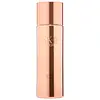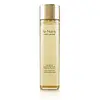What's inside
What's inside
 Key Ingredients
Key Ingredients

No key ingredients
 Benefits
Benefits

 Concerns
Concerns

 Ingredients Side-by-side
Ingredients Side-by-side

Water
Skin ConditioningButylene Glycol
HumectantIsopentyldiol
HumectantDiglycerin
HumectantDipropylene Glycol
HumectantGlycerin
HumectantSwertia Chirata Extract
HumectantNarcissus Tazetta Bulb Extract
AstringentLaminaria Digitata Extract
Skin ProtectingPorphyridium Cruentum Extract
Skin ConditioningTocopheryl Acetate
AntioxidantSodium Hyaluronate
HumectantCamellia Sinensis Leaf Extract
AntimicrobialMyrtus Communis Leaf Extract
PerfumingSigesbeckia Orientalis Extract
Skin ConditioningPalmaria Palmata Extract
Skin ProtectingHydrolyzed Rice Extract
Skin ConditioningCucumis Sativus Fruit Extract
EmollientPyrus Malus Fruit Extract
Skin ConditioningScutellaria Baicalensis Root Extract
AstringentPolygonum Cuspidatum Root Extract
AntioxidantHydrolyzed Wheat Protein
Skin ConditioningSaccharomyces Lysate Extract
HumectantLactobacillus Ferment
Skin ConditioningCaffeine
Skin ConditioningCaprylyl Glycol
EmollientAcetyl Hexapeptide-8
HumectantPPG-26-Buteth-26
Skin ConditioningSucrose
HumectantDipotassium Glycyrrhizate
HumectantGold
Cosmetic ColorantSaccharum Officinarum Extract
MoisturisingGlycine Soja Protein
EmulsifyingLactis Proteinum
Skin ConditioningPearl Powder
Acetyl Glucosamine
Skin ConditioningSaccharide Isomerate
HumectantAscorbyl Glucoside
AntioxidantEthylhexylglycerin
Skin ConditioningPotassium Hydroxide
BufferingPPG-6-Decyltetradeceth-30
EmulsifyingPolymethylsilsesquioxane
Citric Acid
BufferingHexylene Glycol
EmulsifyingPEG-40 Hydrogenated Castor Oil
EmulsifyingParfum
MaskingSodium Metabisulfite
AntioxidantSodium Sulfite
PreservativeDisodium EDTA
Sodium Citrate
BufferingPotassium Sorbate
PreservativePhenoxyethanol
PreservativeWater, Butylene Glycol, Isopentyldiol, Diglycerin, Dipropylene Glycol, Glycerin, Swertia Chirata Extract, Narcissus Tazetta Bulb Extract, Laminaria Digitata Extract, Porphyridium Cruentum Extract, Tocopheryl Acetate, Sodium Hyaluronate, Camellia Sinensis Leaf Extract, Myrtus Communis Leaf Extract, Sigesbeckia Orientalis Extract, Palmaria Palmata Extract, Hydrolyzed Rice Extract, Cucumis Sativus Fruit Extract, Pyrus Malus Fruit Extract, Scutellaria Baicalensis Root Extract, Polygonum Cuspidatum Root Extract, Hydrolyzed Wheat Protein, Saccharomyces Lysate Extract, Lactobacillus Ferment, Caffeine, Caprylyl Glycol, Acetyl Hexapeptide-8, PPG-26-Buteth-26, Sucrose, Dipotassium Glycyrrhizate, Gold, Saccharum Officinarum Extract, Glycine Soja Protein, Lactis Proteinum, Pearl Powder, Acetyl Glucosamine, Saccharide Isomerate, Ascorbyl Glucoside, Ethylhexylglycerin, Potassium Hydroxide, PPG-6-Decyltetradeceth-30, Polymethylsilsesquioxane, Citric Acid, Hexylene Glycol, PEG-40 Hydrogenated Castor Oil, Parfum, Sodium Metabisulfite, Sodium Sulfite, Disodium EDTA, Sodium Citrate, Potassium Sorbate, Phenoxyethanol
Ingredients Explained
These ingredients are found in both products.
Ingredients higher up in an ingredient list are typically present in a larger amount.
Butylene Glycol (or BG) is used within cosmetic products for a few different reasons:
Overall, Butylene Glycol is a safe and well-rounded ingredient that works well with other ingredients.
Though this ingredient works well with most skin types, some people with sensitive skin may experience a reaction such as allergic rashes, closed comedones, or itchiness.
Learn more about Butylene GlycolGlycerin is already naturally found in your skin. It helps moisturize and protect your skin.
A study from 2016 found glycerin to be more effective as a humectant than AHAs and hyaluronic acid.
As a humectant, it helps the skin stay hydrated by pulling moisture to your skin. The low molecular weight of glycerin allows it to pull moisture into the deeper layers of your skin.
Hydrated skin improves your skin barrier; Your skin barrier helps protect against irritants and bacteria.
Glycerin has also been found to have antimicrobial and antiviral properties. Due to these properties, glycerin is often used in wound and burn treatments.
In cosmetics, glycerin is usually derived from plants such as soybean or palm. However, it can also be sourced from animals, such as tallow or animal fat.
This ingredient is organic, colorless, odorless, and non-toxic.
Glycerin is the name for this ingredient in American English. British English uses Glycerol/Glycerine.
Learn more about GlycerinSodium Citrate is the sodium salts of citric acid. In skincare, it is used to alter pH levels and acts as a preservative.
Its main functions are to maintain the pH of a product and neutralize metal ions.
The acidity of our skin is maintained by our glands and skin biome; normal pH level of skin is slightly acidic (~4.75-5.5).
Being slightly acidic allows our skin to create an "acid mantle". This acid mantle is a thin barrier that protects our skin from bacteria and contaminants.
Learn more about Sodium CitrateWater. It's the most common cosmetic ingredient of all. You'll usually see it at the top of ingredient lists, meaning that it makes up the largest part of the product.
So why is it so popular? Water most often acts as a solvent - this means that it helps dissolve other ingredients into the formulation.
You'll also recognize water as that liquid we all need to stay alive. If you see this, drink a glass of water. Stay hydrated!
Learn more about Water